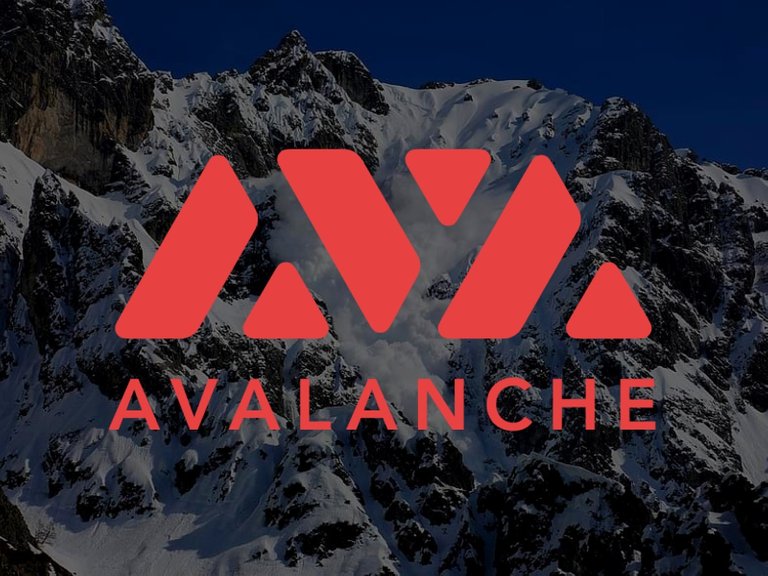INTRODUCTION
Having launched its mainnet in September of 2020, Avalanche is one of the new kids on the block. A review of the Official Website shows Avalanche was created by Ava Labs (a company formed by former Cornell University researcher Emin Gün Sirer). Avalanche boasts of sub-second transaction times coupled with low fees. So, how does Avalanche work to provide that which it boasts?
HOW DOES AVALANCHE WORK?
To examine how Avalanche works, two specific topics will be discussed: Avalanche's triple blockchain strategy and Avalanche's Consensus.
TRIPLE BLOCKCHAIN STRATEGY
For Avalanche, the key factor present is the availability to build blockchains. Each new blockchain created in the ecosystem is known as a 'subset'. In the creation processes of these new blockchains within Avalanche, the blockchain developers exercise full programmability (meaning they can create their own networks token, set their own blockchain rules, and set their own fee schedules). Interestingly, anyone is free to create their own blockchain (subset) on Avalanche by the mere payment of a subscription fee.
The three chains comprising Avalanche's Triple Blockchain Strategy are:
X-CHAIN
Within the Avalanche ecosystem, the first blockchain is an easily programmable, decentralized chain known as the X-Chain. This X-Chain's network allows for the creation and minting of new, unique digital assets (i.e., utility tokens, wrapped tokens, stablecoins, equities, NFT's, etc.).
C-CHAIN
The purpose behind the C-Chain is to provide easier conversions for Ethereum Decentralized Application developers. This C-Chain operates as a conversion chain within Avalanche permitting developers a seamless method of migrating an Ethereum Dapp to the Avalanche blockchain. The C-Chain may be used by all of the available essential Ethereum tools and provides support for many Ethereum features (i.e., Web3.js, Embark, and Metamask to name a few).
P-CHAIN
Within the Avalanche ecosystem, the P-Chain is where the utilities of the network run (staking, coordination of validators, creation of new 'subsets', and the monitoring of existing 'subsets'.
So, in its most basic form for explanation, each of these three chains are representations of a virtual machine. Each of the virtual machines are then deployed on to the 'subnet'. Then within each 'subnet' working in unison are a special set of validators providing consensus (with each 'subnet' providing its own incentives to insure validator honesty).
It is not out of place to call the Avalanche chain a “platform of platforms”.The network consists of thousands of subnets that come together to form one interoperable network.
[Innocent, O. "The Avalanche Chain: A Deep Dive". (Accessed September 5, 2021)].
CONSENSUS
STAKING
Regular coin holders can delegate their tokens to an established Validator correspondingly receiving rewards of AVAX tokens in return. To become a validator a user must hold a minimum of 2000 AVAX. The hardware requirements are minimal and earnings average around 10 percent (give or take). Validators are permitted to validate as many 'subnets' as their capacity allows but must additionally validate the primary network as well.
CONSENSUS PROTOCOL
Avalanche uses a unique hybrid delegated proof-of-stake (DPoS) mechanism, which due to its reduced consensus requirements is much faster than the singular PoS or PoW mechanisms, The Avalanche chain is constructed so that millions of validators may be accommodated adding more layers of decentralization in the system.
Specifically, "The Snow* family of protocols, introduced by Avalanche, combine the best properties of classical consensus protocols with the best of Nakamoto consensus. Based on a lightweight network sampling mechanism, they achieve low latency and high throughput without needing to agree on the precise membership of the system. They scale well from thousands to millions of participants with direct participation in the consensus protocol. [Sekniqi, K., Laine, D., Buttolph, S., and Sirer, E. "Avalanche Platform Whitepaper". (Accessed September 5, 2021). In table format, this appears:
According to founder Emin Gün Sirer:
Only three times in the 45-year-old history of distributed systems have we had a new family emerge. Avalanche is a brand-new family, as big of a breakthrough as Satoshi’s protocol was; it combines the best of Satoshi with the best of classical in scales like no other that allow anyone to integrate themselves into the consensus layer.
[Seq. "Avalanche Consensus, The Biggest Breakthrough since Nakamoto". (Accessed September 5, 2021)].
By utilizing this unique delegated proof-of-stake consensus, Avalanche protocols are very fast. "They can achieve irreversible finality in sub 2 seconds (with most happening sub 1 second), quicker than a typical credit card transaction. They support many thousands of transactions per second, in excess of Visa’s typical throughput of 4500 TPS". [Id.]. And the metrics presented are base layer, which are further enhanced in Layer-2.
For a much more detailed and technical view of the Avalanche consensus protocol, you may consult the Whitepaper here.
CONCLUSION
Clearly the unique technical features of Avalanche make this a stand-out project in the cryptosphere. It is very likely that as the problems plaguing the Ethereum ecosystem continue, more and more developers looking for alternatives will look to Avalanche for its speedy transaction times, latency, security, ease of use, and lower transaction costs.
Posted Using LeoFinance Beta

.png)
The blockchain competition is really expanding, it’s no more a matter of which blockchain is the best, it’s a matter of which blockchain suits you. Nice post by the way.
Thank you!
Posted Using LeoFinance Beta